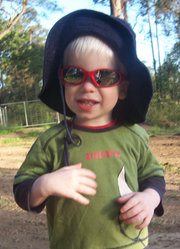The best-selling novel The Da Vinci Code is one of those books you hear about long before you read it. You might pick it up with some initial skepticism—will it lead to a slippery slope of Oprah-approved literature that ends with Tuesdays With Morrie? (And do you really want to read the same novels as your mom?) It only takes a couple of pages, though, before even the doubters are hooked. The murder mystery mixed with cryptography plus a dash of power politics deep within the bowels of the Vatican makes for truly scintillating reading. The Da Vinci Code is a page-turner even for the less literary-minded out there.
But those same doubters really couldn’t be blamed for wondering why a videogame company might snap up The Da Vinci Code license. It’s not like the book spent a gazillion weeks on the best-seller lists because males aged 18 to 34 were putting it on their Amazon wish lists. If you think about it, though, adapting this book into a game makes a lot of sense. Solving the mystery of a gruesome murder requires you to decipher complex codes, find clues hidden in paintings, and unearth secret doors and hallways.... You’re constantly evading a sinister assassin who represents a shadowy cabal out to destroy you.... You visit a series of exotic locations, from the Louvre Museum in Paris to the Pope’s chambers in the Vatican to the catacombs of Rome and the cathedrals of Britain.... Really, all you need now is a nifty sidekick (surprise! DVC has one) and the game basically designs itself.
The Da Vinci Code is in development by The Collective and is scheduled for release this May to coincide with the opening of the motion picture also based on the book. It’s a third-person action-adventure that plays out the same events from the novel using a variety of standard gameplay mechanics. Sneaking down quiet hallways, car chases through Rome, labyrinthine hedge mazes, melee fighting psychotic monks—if Vatican priests in ancient Rome did it, chances are it’s in this game.
The player will assume the role of Robert Langdon, the novel’s dashing protagonist. He’s a Harvard professor and the world’s leading symbologist (someone who interprets codes and cryptographs). Langdon is played by lovable everyman Tom Hanks in the movie, though it’s not yet certain whether Hanks’ likeness will be in the game. (Naturally, we’re hoping at least his laughably feathery hairdo will be represented.) You’ll also play as Langdon’s cohort, Sophie Neveu (played in the movie by Amelie cutie Audrey Tautou). Cordy Rierson, producer on the game, describes the two characters as “stylistically and behaviorally different, providing the player a variety of experiences, including stealth, adventure, and combat.” Each character will have his or her own strengths and weaknesses, too. “Sophie’s petite stature, physical speed, agility, and law enforcement skills” will be her primary assets, says Rierson, while Langdon will utilize his “knowledge, physical capabilities, and prowess.”
In other words, this won’t be a point and click adventure tale full of arcane puzzles and other such dull fare that might be more familiar to the people who haven’t played any games but CSI or Myst. “There is so much diversity offered to the player in this game,” says Rierson, “whether it’s stealth play through dark corridors, creating diversions for a quick getaway, or facing the fire going toe-to-toe with a mercenary monk while fighting for your life.” So, while the book may have been targeted at the geriatric set, the game sounds like it’s aimed directly at today’s action gamers.
The movie is being directed by Ron Howard, who’s come a long, long way since The Burbs. Recently, he’s executive produced several TV series that are hits with the gamer crowd (Arrested Development, 24), and his record with movies (A Beautiful Mind, Cinderella Man) is impeccable. So if Steven Spielberg is getting involved in making games with Electronic Arts and Peter Jackson’s all about Kong, we wondered if Ron Howard
would be wanting to get in on this game action. “Ron Howard has provided some key creative suggestions that have helped us stay true to the movie’s spirit and touch on the major themes,” says Rierson. That said, the game will offer something new even to someone who’s read the book and seen the movie. “The game expands The Da Vinci Code universe and allows the player to explore locations not visited in the book or the film,” says Rierson.
These early screens give no clear indication of how the game will play. But if even one out of 10 of the grannies who loved the book decides to pick this game up, it’ll still stand a pretty good chance of outselling artsy fare such as Beyond Good and Evil.
Know the Code
Fun facts about everyone’s favorite airplane read
The Vatican
In the book, the Catholic Church’s worldwide headquarters is where a lot of the major action goes down, and we’d imagine with all its hush-hush holiness, it will surely be the setting for a stealth mission or two in the game. Nuns, typically, don’t suffer trespassers lightly....
The Louvre
The scene of the crime, and of the Mona Lisa. According to the website for the book, the museum’s art collection is so massive that it would require an unwieldy number of full-time staffers to monitor all the museum’s security cameras. Consequently, a bunch of the cameras are fake.
Mona Lisa
Possibly the world’s most famous work of art, La Gioconda, as she’s known in her native Italian, plays a prominent role in The Da Vinci Code. The book posits that this painting, along with The Last Supper, contains hidden clues about Catholicism’s deepest, darkest secrets.
Opus Dei
Respectable Catholic prelature that promotes clean living and hard work, or shadow cult with misogynistic, masochistic tendencies and a right-wing political agenda? We’re still figuring that one out for sure, but you can imagine which characterization made it into the book.
Albino Monks
The primary villain is Opus Dei operative Silas, a sex-crazed and self-flagellating albino monk. The negative characterization has albino rights activists up in arms—especially as Silas’ eyes are spookily described as red. “That’s a myth,” says one expert. “Most often in people with albinism the eyes are light blue or even hazel.” (For the record, the movie stars the blue-eyed Paul Bettany in the role.)
Publisher: 2K Games
Developer: The Collective/Foundation 9
Release Date: May 2006
Copyright © 2006 Ziff Davis Media Inc. All Rights Reserved. Originally appearing in Electronic Gaming Monthly.




